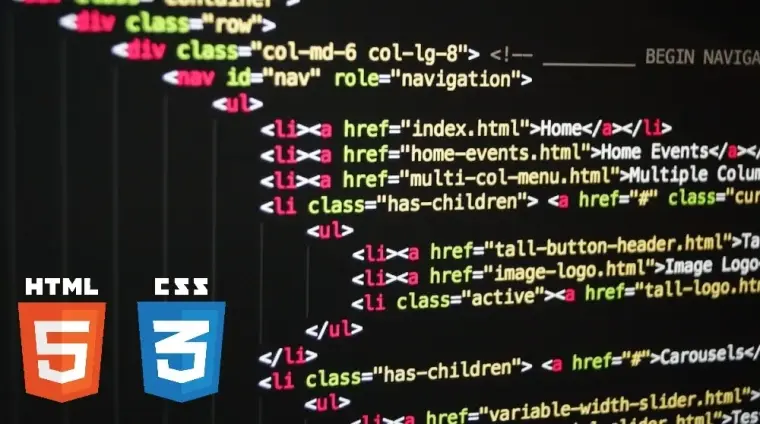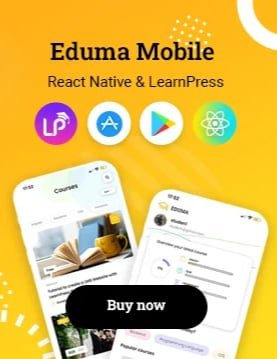Do you realize that 80% of the over 62,000 web hits Sterling Trading Tech saw in its first year were new? This shows the huge power of using SEO to make your digital marketing more visible. It is very competitive online. Yet, with a good SEO strategy, people can easily find and be interested in your brand’s products or services.
By working on your search engine rankings, you can get ahead online. Creating a solid SEO visibility plan is essential for your marketing tasks. This plan looks at how well websites perform online and helps you see how to get a better spot on search engine lists.
Key Takeaways
- SEO visibility is a crucial metric for understanding your website’s online performance and ranking potential.
- Improving your SEO visibility score can lead to increased website traffic, higher search engine rankings, and more targeted customer engagement.
- Implementing effective SEO strategies as part of your digital marketing efforts is essential for boosting your brand’s online visibility.
- Regularly monitoring and optimizing your website’s technical SEO, content, and off-page factors can significantly enhance your SEO visibility.
- Leveraging local SEO tactics, such as Google My Business optimization and consistent online citations, can drive higher visibility in local search results.
Understanding SEO Visibility
SEO visibility helps us measure how well websites perform online. It gives a score called the SEO visibility score. This score guides companies on how to boost their search engine rankings.
What is SEO Visibility?
SEO visibility is key to a company’s online success. It tells us how often a site shows up in search results. The more visible a site is, the better it does online. This affects its ranking and how well it performs overall online.
Importance of SEO Visibility
Holding a good SEO visibility is vital for any business. It draws more specific visitors and grows their online presence. By knowing their SEO visibility score, companies can spot areas needing work. This allows them to improve and reach higher in search results, attracting more potential customers.
Measuring SEO Visibility Score
Marketers use various tools to understand search results and factors that affect rankings. These tools often include a feature to check a site’s SEO visibility score. This score mixes all keyword rankings with a predicted click-through rate. It gives fair weight to keywords that rank higher, shaping the total score.
Insights from Your SEO Visibility Score
Your SEO visibility score tells you how often people see your website in search results. It looks at searches using your keywords. But it doesn’t count if they never scroll to find your website.
Results Page Viewing
The SEO visibility score shows how much your site shows up in SERPs. It’s more than just tracking where you rank. It measures how often your website is visible to people searching.
Impact of Algorithm Changes
Search engines change their rules sometimes. These changes can lower your visibility score. Google and Moz can warn you about these changes. Then, you can update your strategy and keywords.
Effectiveness of Digital Marketing Campaigns
Your SEO score also shows if your digital marketing is working. This includes social media and new web pages. It helps you see if you’re reaching the right people and drawing in more visitors. This helps shape your future marketing and strategy.
Improving Your Website’s SEO Visibility
Search engines connect anchor text with the page it leads to. So, using it wisely is crucial. It helps Google know which keywords to link to your site or page. This can boost your rank in search results.
Title tags and meta descriptions play a big role too. They show what your content is about before someone clicks. Picking the right keywords here can also increase how often people click on your link. It’s part of making your SEO strategy successful.
Interlink with Keyword Anchor Text
By using keyword anchor text, we guide search engines to the right keywords. It makes them understand our content better. This, in turn, helps improve our site or page’s search rank.
Optimize Title Tags and Meta Descriptions
Just like with anchor text, careful selection of keywords in title tags and meta descriptions is important. It helps search engines see the relevance of your content. This strategy can lead to more people clicking on your link, known as boosting click-through rates. It’s a key part of SEO.
Benchmark Top-Ranking Pages
Looking at top-ranking pages can teach us a lot. They show how good SEO and content strategies work together. By studying these pages, we learn what draws people to them. This knowledge helps us in refining our own SEO strategies for better results.
On-Site SEO Projects
Working on single pages improves SEO. But, making big projects for on-site SEO helps a lot more. These efforts boost your SEO score in many ways.
Link-Building Campaigns
Starting link-building campaigns greatly boosts site power and visibility. Getting top-notch backlinks from trusted sites tells search engines your content is topnotch. It helps get better rankings.
Category Page Optimization
Make sure your category pages shine for on-site SEO projects. Keep them organized, keyword-relevant, and user-friendly. This lets search engines see clearly what your site offers. You can climb higher on search result pages.
Long-Tail Keyword Targeting
Highlights long-tail keyword targeting for better on-site SEO. Adding detailed search phrases to your content brings in more specific visitors. It also matches your pages better with what people are looking for.
Leverage Your Homepage
Your homepage gathers the most links and mentions. This makes it crucial to include links there. A text link in the homepage footer is vital.
It boosts SEO visibility swiftly. Plus, other pages draw their strength from the homepage’s authority.
Headline Optimization
Crafting powerful headlines is key in SEO. They catch the reader’s eye and affect how well search engines rank your content. By using important keywords smartly, you can make your website more visible.
Using Primary Keywords in H1 Tags
Using your main keyword in the H1 tag, the biggest heading, is crucial for your site’s ranking. It tells search engines what your content is about. This way, when someone looks up that keyword, your site is more likely to pop up early in their search.
Incorporating Secondary Keywords
It’s vital to have your main keyword in the H1 tag. But, secondary keywords are important too. They help your content be found by more searches. Just make sure it all reads naturally. Don’t stuff in too many keywords. That can put off readers.
Using the main keyword in your headline and a secondary in a subheadline is a good trick. It boosts your chances with search engines. Plus, it keeps your writing clear and appealing to readers.
Mobile Readability
More people are using mobile devices today. It’s key to make your content look good on phones and tablets. Pay attention to font size, spacing, and how long your sentences are. This will help users find your site easily and understand it better.
Google checks how well your site works on mobiles. So, it’s vital to make your content readable on small screens.
Font Size and Spacing
Choosing the right font size is important. More so, leaving enough white space around your text matters too. Doing this can really boost how well people read your content on their phones.
Using bigger font sizes and adding space between lines helps your readers. It makes everything easier to read and understand quickly.
Concise Writing
Short and sweet messages are great for mobile readers. It’s best to keep your writing clear and to the point. Avoid long paragraphs and choose your words carefully. This makes your content a breeze to read on mobile screens.
Mobile Page Speed
Quick-loading pages are essential for mobile users and search engines. People don’t like waiting for a slow site to load. Even a one-second delay can hurt your website.
To keep your site fast, make sure to optimize your images. Also, cut down on redirects and use caching. These steps will help your site be faster on mobile devices.
SEO Strategies for Digital Marketing
SEM and SEO help keep your brand visible. SEO boosts your website’s visibility organically. This boosts your brand’s growth in the long run. SEM uses ads like PPC to find new customers. It directs more people to your website.
Search Engine Presence (SEM and SEO)
Native ads blend in with the content, making them interesting. They inform people subtly about your company. This way, you guide people to learn more about what you offer.
Native Advertising
Owned-and-operated platforms are fully controlled by the owner. This can be a company’s site, app, or social media. They let brands tailor their ads to their audience, reaching them effectively.
Owned-and-Operated Platforms
Email and Social Media Retargeting
Email and social media help brands stand out. They work well for email retargeting, reminding old customers or showing new ads. They are key in a omnichannel strategy to reach lost or disengaged customers.
Almost all online adults use email, with over 90% checking their inbox every day. Roughly 60% of people buy something online after getting a remarketing email. The return on email retargeting investment can be an amazing 4,300%. Plus, around 41% of people might buy from a remarketing email.
Social media retargeting is also incredibly effective. Those who see retargeting ads are much more likely to buy on your site. Plus, it boosts business name searches tremendously. The CTR for these ads is 10 times higher compared to normal ads.
Social commerce significantly influences buying decisions. Around 82% of shoppers find products on social media and buy them on their phones. Yet, about 80% abandon their shopping carts. Reducing these abandoned carts is big. A third of U.K. shoppers then buy the same product via retargeting later, showing the strategy’s power.
In summary, email retargeting and social media retargeting are vital for any marketer. They can bring back old customers, lower cart abandonment, and push more sales. By using these channels, marketers increase their brand’s reach and success.
Utilizing Relevant Keywords
Using relevant keywords in your content helps search engines know about your site. This makes it easier for them to show your site in top search results. It’s essential to pick keywords linked to your site’s topic. These words should match what people search for online.
| Keyword Type | Example | Search Volume |
|---|---|---|
| Broad Keyword | garage doors | 49,500 |
| Long-Tail Keyword | best garage doors for residential homes | 1,600 |
| Informational Keyword | how to install garage doors | 12,100 |
| Commercial Keyword | buy garage doors online | 4,400 |
Through keyword research, you find powerful keywords to use. This makes search engines see what your site is all about. Your site then gets seen more and ranks higher in search results. This is known as the search engine results pages (SERPs).
Optimizing Titles and Meta Descriptions
Titles and meta descriptions are vital for SEO. They tell search engines what your site is about. By adding the right keywords to your title tags and meta descriptions, you make your pages more valuable to search engines. This can boost your search engine rankings and click-through rates.
Google shows about 158 characters for desktop meta descriptions and 120 for mobile. Keep your descriptors concise and engaging. They should accurately show what your page is about and make people want to click. Use an active voice, clear language, and a call-to-action. Remember to check if it fits your page’s focus.
The Yoast SEO plugin for WordPress is great for handling title tags and meta descriptions. It checks the length and keywords in your content and gives SEO tips. This tool is perfect for sites with many pages that need content updates.
Google says meta descriptions don’t boost SEO directly. But they can really affect your click-through rates. Crafting unique, interesting descriptions leads to more clicks. This means more people visit your site, and your SEO gets better.
Yoast SEO Premium also includes an AI tool for making ideal meta descriptions. It helps you avoid using the same descriptions on different pages. This keeps your site user-friendly and away from search engine penalties.
Creating Quality Content
Making quality content boosts your site’s SEO visibility. Focus on being helpful and on topic. This helps your website show up better in search results.
| Metric | Value |
|---|---|
| Monthly organic visitors to the website | 362,732 |
| Percentage of content that should be 10x better than what’s currently ranking on Google | 27% |
| Number of common keywords shared with main organic competitors | At least 4-5 |
| Percentage of search engine traffic boost after optimizing content for search intent | 70.43% |
| Number of backlinks acquired for a blog post featuring stats and data on voice search | 5.6K |
| Percentage correlation between backlinks and first-page Google rankings | Strong |
| Increase in Google search performance for short URLs compared to long URLs | Significant |
High-quality SEO content should focus on the customer, delivering content that is interesting, compelling, and easy to read.
It’s important your content meets needs at all stages of the buy journey. SEO looks for content that’s informative and engaging. This improves user experience by serving up quality material.

Image Optimization
Images are key for better SEO visibility on your site. By naming your image files well and using good alt text, search engines can figure out what your site is about. This will help your site’s search ranking.
File Names and Alt Text
Use important keywords in your image file names. This shows what the image is about to search engines, boosting your search engine rankings. Also, add detailed alt text for each image. Use 10-15 words to describe the image. This helps not just search engines but also users who can’t see well.
Working on your image optimization really matters. Spend time naming your image files wisely and writing good alt text. This makes it simpler for search engines to know and show your images. It brings more visitors to your site. They are people looking for what you share.
Internal Linking Structure
The internal linking of a website is key for search engine rankings and website structure. It helps search engines see how different pages relate. This shows the structure and connection of your content.
By carefully placing internal links, you can lead both users and search engines to your key pages. This improves the user’s journey and tells search engines which pages to value. Ultimately, this boosts their search engine rankings.
Creating a strong internal linking strategy is important for a well-organized website that performs well in SEO. It includes picking main content, grouping topics, and using the right anchor text. These efforts help users and search engines navigate your site better.
It’s important to regularly check and tweak your internal linking structure. This keeps your website primed for search engines. It also makes it simple for users to get around and for search engines to properly track and show your content.
URL Optimization
URLs are key for SEO. They let search engines know what a page covers. Be sure to use important words in your URLs. This makes it simpler for search engines to grasp your page’s content. It helps increase your site’s ranking in search engine rankings.
Improving your URLs greatly affects your SEO plan. Well-crafted URLs make the user’s journey smoother. They give a hint about the page’s content. This better understandability can boost the number of clicks and how easily your page shows up in searches. By using the right techniques, your URLs will be more friendly for both users and search engines.
When optimizing URLs, here are a few smart moves. Use hyphens, not underscores, and avoid using capital letters. Keep URLs short yet clear, and add in key search terms. Also, make sure to use HTTPS, arrange your content in neat folders, and don’t make your URL structures too complicated. Doing all this can make your website easier to find and explore on the web.
Focusing on optimizing URLs is an essential part of your overall SEO plan. It can make your site easier to find and trust. This leads to more visitors and better search rankings over time.
Social Media Integration
Social media is key in today’s digital marketing. It helps businesses boost their site’s search engine rankings and brand visibility. By blending social media with SEO, companies can find new ways to connect with their audience.
This mix can increase the number of people visiting a website. Businesses using social media in their SEO plans have seen more visitors. This happens because search engines often link high social media activity to better search rankings.
Being noticed on major social media platforms can hugely increase traffic. This makes it more likely for people to see your content and visit your site. Also, active participation on social media can make your brand more well-known and trustworthy. This can boost clicks on your search result links.
| Statistic | Value |
|---|---|
| Percentage of social media marketers who strongly agree that people prefer finding brands on social media over traditional search engines | 42% |
| Percentage of people who would choose to buy directly from social media apps over a brand’s website in 2024 | 82% |
| Percentage of people who would choose to buy directly from social media apps over third-party sites like Amazon in 2024 | 84% |
| Percentage of respondents who chose short-form videos as the format with the largest return on investment (ROI) | 36% |
To get the most from social media, focus on shareable content. This tends to get more likes and shares. Putting a social media feed on your site helps keep things fresh and boosts your SEO.
Using the right keywords in your social media can make you easier to find online. This can bring more people to your site. Being active and spreading your content far can also help you make the most of social media’s SEO benefits.

As the online world changes, linking social media to SEO becomes more vital. This connection can help businesses find new ways to interact with their audience. It can lead to more visitors and sales on their websites.
Targeting Long-Tail Keywords
Long-tail keywords are more specific than general terms. They help people find detailed information on topics. Including these keywords in your content makes it easier for people to find your website in search results. This is because search engines better understand what your site is about.
Search volumes for long-tail keywords are usually low. This means they are easier to rank for. Take “sushi” as an example. Its difficulty is 93%. Contrast that with “sushi sandwich recipe,” which has a difficulty of only 27%. Also, long-tail keywords often attract users who are ready to take action. They are more specific and focused than general terms.
Using long-tail keywords can make PPC ads cheaper. This is because the ads are more specific. While you might need many long-tail keywords to get as much traffic as a single general term, the strategy can still be very effective.
| Keyword | Monthly Search Volume | Keyword Difficulty |
|---|---|---|
| sushi | 165,000 | 93% |
| sushi sandwich recipe | 20 | 27% |
Focusing on long-tail keywords can greatly boost your site’s rankings. Including them in your content helps search engines understand what your pages are about. This makes it more likely for your content to match what users are looking for.
Tools like Semrush’s Keyword Magic Tool and Google’s features can help you find long-tail keywords. By targeting these specific keywords, you can become an authority on certain topics. This would attract more visitors to your website.
Building Backlinks
Backlinks are links from other websites to yours. They’re crucial for SEO. Think of them as votes of confidence. They tell search engines your site is trustworthy and credible. By earning more backlinks, you can climb higher in search rankings and look more reliable online.
One author has gathered a stunning 1.6 million backlinks using certain strategies. For example, they’ve seen success with the “Skyscraper” Content method. This approach helped one piece gather 7.76K backlinks. Even a guide on building links, 4,834 words long, keeps attracting backlinks six years later.
Yet, 94% of online content gets no backlinks at all. This huge number shows why smart backlink building is key. It helps your content not get lost in the digital world.
| Content Format | Backlink Generation Potential |
|---|---|
| “Why” posts | Higher |
| “What” posts | Higher |
| Infographics | Higher |
| Videos | Higher |
| Shorter articles | Lower |
According to data, content types like “Why” and “What” posts, infographics, and videos get more backlinks. Long-form content also does well in Google. It’s better than short articles.
One way to get backlinks is the “Moving Man Method.” This method helps get links from trusted .edu sites and popular pages. Using HARO can also get you news site backlinks.
Another way is to ask sites still linking to old content to link to you instead. They might update their links with your current, relevant material.
Getting high-quality links is a huge SEO win. This guide shares 77 strategies that can make your site more visible and trusted in your niche.
Page Speed Optimization
Page speed is vital for SEO, affecting user experience greatly. Slow websites make users leave, harming your site’s SEO. It’s key to make all web pages load fast and smooth.
Google uses page speed to rank websites. A slow website means lower search rankings. And search engines may not index your site well if pages load slowly.
There are many ways to boost page speed. You can compress data, minify codes, change how the browser caches data, and make servers respond faster. A content distribution network (CDN) also helps by spreading your content across many servers.
Images can impact speed a lot, making up most of a page’s size. You should compress images, pick the right file types, and use CSS sprites for common images.
Always check your page speed with tools like Google PageSpeed Insights and WebPageTest.org. These tools reveal key metrics and help improve how users see your site.
Focusing on page speed boosts user experience and your site’s search ranking. This can lead to more visitors who are interested in your content.
Conclusion
Effective SEO strategies really boost your website’s visibility and attract more visitors. They focus on key areas like making your site easier to find, improving content, and using digital marketing. These steps make your brand stand out online, helping you beat the competition. Keep using these SEO techniques regularly to draw in the people you want to reach.
It’s key to make your site mobile-friendly, have great titles and descriptions, and get lots of good links. These steps are essential for making your site more visible and appealing to your audience. Always keep up with the latest SEO tips to make your strategy sharper. This way, you’ll hold a strong position in your field.
Don’t forget, SEO work keeps going; it’s not something you do once. Always watch how well you’re doing, try new things, and adapt to changes in search practices. This will help your site to always be visible, useful, and attractive to your target audience. With SEO, you can find new paths to grow and succeed online.
FAQ
What is SEO Visibility?
Why is SEO Visibility important?
How is SEO Visibility measured?
How does my SEO Visibility Score impact my business?
How can algorithm changes affect my SEO Visibility?
How can I improve my website’s SEO Visibility?
Why is my homepage important for SEO Visibility?
How should I optimize my headlines for SEO?
Why is mobile optimization important for SEO Visibility?
How do SEO and SEM work together for visibility?
How can email and social media help boost my SEO Visibility?
Source Links
- https://www.mtu.edu/umc/services/websites/seo/
- https://www.linkedin.com/pulse/local-seo-strategies-boost-your-businesss-online-visibility-nlqqc
- https://www.llrpartners.com/growth-bit/3-essential-seo-tips-boost-visibility/
- https://www.fool.com/the-ascent/small-business/seo/seo-visibility/
- https://backlinko.com/hub/seo/visibility
- https://ocreative.com/top-5-seo-strategies/
- https://rgray.io/blog/how-to-boost-search-visibility/
- https://www.seodiscovery.com/blog/what-is-seo-visibility-and-how-can-you-improve-it/
- https://aspireinternetdesign.com/search-engine-optimization/20-easy-ways-to-improve-seo-and-increase-your-websites-visibility/
- https://rockcontent.com/blog/seo-visibility/
- https://moz.com/learn/seo/on-site-seo
- https://www.webfx.com/seo/learn/onsite-seo/
- https://blog.hubspot.com/blog/tabid/6307/bid/33655/a-step-by-step-guide-to-flawless-on-page-seo-free-template.aspx
- https://www.semrush.com/blog/homepage-seo/
- https://www2.squarespace.com/enterprise/resources/9-tips-to-improve-your-websites-seo-rankings-from-a-squarespace-expert
- https://www.semrush.com/blog/seo-headline/
- https://coschedule.com/blog/seo-headlines
- https://www.stateofdigitalpublishing.com/digital-publishing/seo-headlines/
- https://www.spyfu.com/blog/mobile-seo-tips/
- https://www.semrush.com/blog/mobile-seo/
- https://www.webfx.com/seo/learn/mobile-seo/
- https://backlinko.com/seo-strategy
- https://blog.hubspot.com/marketing/seo-strategy
- https://www.amst.com/resources/tips-for-digital-marketers-understanding-email-remarketing-retargeting-ads-35108
- https://influencermarketinghub.com/social-media-retargeting-strategies/
- https://www.frase.io/blog/seo-keyword-strategy/
- https://www.semrush.com/blog/keyword-strategy/
- https://blog.hubspot.com/marketing/how-to-do-keyword-research-ht
- https://www.cazbah.net/meta-what/
- https://yoast.com/meta-descriptions/
- https://www.crowdcontent.com/blog/seo/how-to-create-high-quality-content-for-seo/
- https://yoast.com/quality-content/
- https://contentmarketinginstitute.com/articles/optimize-images-seo/
- https://developers.google.com/search/docs/appearance/google-images
- https://yoast.com/image-seo/
- https://yoast.com/internal-linking-for-seo-why-and-how/
- https://www.semrush.com/blog/internal-links/
- https://backlinko.com/hub/seo/internal-links
- https://www.siteguru.co/seo-academy/url-optimization
- https://backlinko.com/hub/seo/urls
- https://blog.hubspot.com/marketing/how-to-optimize-urls-for-search
- https://optinmonster.com/social-media-and-seo/
- https://blog.hubspot.com/blog/tabid/6307/bid/14624/7-ways-to-integrate-search-engine-and-social-media-marketing.aspx
- https://www.semrush.com/blog/how-to-choose-long-tail-keywords/
- https://www.thehoth.com/blog/long-tail-keyword-seo/
- https://www.positional.com/blog/long-tail-keywords
- https://backlinko.com/high-quality-backlinks
- https://seo.co/link-building/strategies/
- https://moz.com/learn/seo/page-speed
- https://backlinko.com/hub/seo/pagespeed
- https://www.semrush.com/blog/page-speed/
- https://www.ballstatedaily.com/article/2022/12/how-to-improve-your-search-engine-rankings-for-2023?ct=content_open&cv=cbox_latest
- https://seeresponse.com/blog/maximize-leads-with-10-proven-seo-strategies-in-2024/
- https://yoast.com/seo-friendly-conclusion/

















